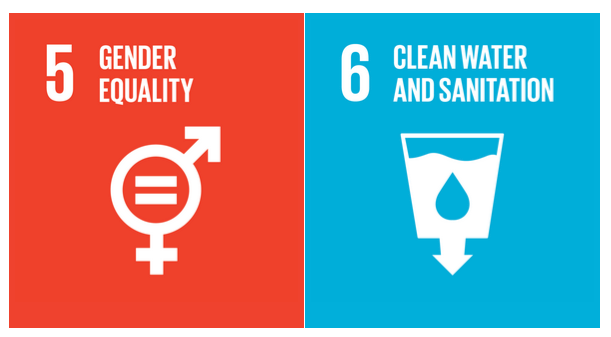
5 - Gender Equality
Gender equality is a fundamental value for inclusive and sustainable societies. The European Union (EU) has been actively promoting and implementing strategies to advance gender equality in various spheres, including the business sector.
In this blog post, we will explore EU action strategies for businesses to improve gender equality and provide easy steps for implementation.
EU Action Strategies for Businesses:
The EU has put forth several action strategies to promote gender equality in the business sector. Here are some key strategies:
- Gender Equality Plans: The EU encourages businesses to develop and implement Gender Equality Plans. These plans outline specific actions and targets to promote gender equality within the organization. They can address areas such as recruitment and promotion practices, work-life balance, pay equity, and training opportunities.
- Equal Pay: The EU advocates for equal pay for equal work and urges businesses to conduct regular pay audits to identify and address gender pay gaps. Implementing transparent pay structures and ensuring pay equity are crucial steps toward achieving gender equality in the workplace.
- Work-Life Balance: The EU emphasizes the importance of work-life balance for both men and women. Businesses can support work-life balance by offering flexible working arrangements, parental leave policies, and affordable childcare options. Promoting a supportive and inclusive work environment enables employees to balance their professional and personal responsibilities effectively.
- Leadership and Decision-Making Positions: The EU promotes the increased representation of women in leadership and decision-making positions. Businesses can adopt measures such as gender quotas, targets, and mentoring programs to enhance female representation at senior levels. Encouraging diversity in decision-making processes contributes to better outcomes and a more inclusive organizational culture.
Easy Implementation Steps for Businesses:
Implementing gender equality measures in your business can be achieved through the following easy steps:
- Conduct a Gender Equality Assessment: Start by assessing your current practices and policies to identify areas where gender equality can be improved. This assessment can include analysing recruitment processes, pay structures, career advancement opportunities, and work-life balance provisions.
- Develop a Gender Equality Policy: Create a gender equality policy that clearly communicates your commitment to fostering gender equality within the organisation. The policy should outline specific objectives, actions, and timelines for achieving gender equality goals.
- Establish a Gender Equality Committee: Form a dedicated committee or task force comprising representatives from different levels and departments of your organisation. This committee can drive the implementation of gender equality initiatives, monitor progress, and ensure accountability.
- Provide Gender Equality Training: Offer gender equality training programs to raise awareness, challenge biases, and promote inclusive practices among employees. This can include workshops, seminars, or online training modules to foster a gender-sensitive work culture.
- Review Recruitment and Promotion Practices: Assess your recruitment and promotion processes to ensure fairness and equal opportunities for all candidates. Eliminate gender biases from job descriptions, implement diverse selection panels, and establish clear criteria for promotions based on merit.
- Support Professional Development: Provide mentoring and sponsorship programs to support the professional development of women within your organisation. Offer training and leadership development opportunities that empower women to progress in their careers.
- Monitor and Report Progress: Regularly monitor and report on the progress made toward achieving gender equality goals. Set key performance indicators (KPIs) and track data related to gender representation, pay equity, and employee satisfaction. Transparency and accountability drive continuous improvement.
Conclusion:
By aligning with EU action strategies and implementing these easy steps, businesses can contribute to advancing gender equality within their organisations. Promoting equal opportunities, fostering work-life balance, addressing pay gaps, and increasing female representation in leadership positions are crucial steps toward creating inclusive workplaces. Embracing gender equality not only benefits individuals but also strengthens businesses and societies as a whole.
6 - Clean Water & Sanitation
Access to clean water and sanitation is a fundamental human right and a key component of sustainable development. The Sustainable Development Goal 6 (SDG 6) aims to ensure availability and sustainable management of water and sanitation for all.
In this blog post, I will explore SDG 6 and discuss simple ways in which businesses can contribute to achieving clean water and sanitation.
This addresses the global water crisis and the lack of adequate sanitation facilities, aiming to achieve universal access to safe drinking water and basic sanitation by 2030.
The key targets of SDG 6 include:
- Access to safe and affordable drinking water: Ensuring that everyone has access to a reliable and safe source of drinking water within a reasonable distance from their homes and workplaces.
- Sanitation facilities and hygiene promotion: Promoting the construction of adequate sanitation facilities and encouraging proper hygiene practices, such as handwashing, to prevent waterborne diseases.
- Water resource management: Enhancing water-use efficiency, protecting water ecosystems, and implementing integrated water resources management strategies to address water scarcity and ensure sustainable water availability.
Simple Ways Businesses Can Start:
- Water Conservation Measures: Implement water-saving initiatives within your business operations. This can include installing water-efficient fixtures, repairing leaks promptly, and promoting awareness among employees about responsible water usage. Having signs near sinks ‘Save Water’. Have a reporting system for leaks/dripping taps.
- Wastewater Treatment and Recycling: Consider implementing wastewater treatment systems within your premises to treat and recycle water for non-potable uses. This helps reduce water consumption and minimizes the impact on freshwater resources.
- Support Water Access Projects: Collaborate with NGOs, nonprofits, or local communities to support projects that provide clean water access to underserved areas. This can involve financial contributions, technical expertise, or volunteering to assist in the implementation of water infrastructure projects.
- Promote Hygiene Education: Raise awareness about the importance of proper hygiene practices among employees and the wider community. Conduct educational campaigns or workshops on handwashing, sanitation, and hygiene to prevent the spread of waterborne diseases.
- Supply Chain Sustainability: Assess the sustainability practices of your supply chain partners. Encourage suppliers to adopt responsible water management practices, such as reducing water usage, treating wastewater, and adhering to sustainable sourcing guidelines.
- Engage in Public-Private Partnerships: Collaborate with government agencies, NGOs, or other businesses to develop innovative solutions for water and sanitation challenges. Public-private partnerships can bring together expertise, resources, and funding to implement sustainable water management projects.
- Measure and Report Water Footprint: Monitor and measure your business’s water consumption and wastewater generation. Set targets for reducing water usage and report progress transparently. This helps identify areas for improvement and demonstrates your commitment to sustainable water management.
- Advocate for Water Policy and Regulation: Engage in advocacy efforts to support water-related policies and regulations that promote clean water and sanitation. Work with industry associations, policymakers, and stakeholders to drive positive change at the local, regional, or national level.
- Having a water butt both at home and at work to save water to use for watering plants etc.
Conclusion:
By taking simple yet meaningful actions, businesses can contribute to SDG 6 and play a vital role in ensuring clean water and sanitation for all. Water conservation, wastewater treatment, supporting water access projects, promoting hygiene education, and engaging in partnerships and advocacy are effective ways for businesses to make a positive impact. Together, we can work towards a world where everyone has access to safe water and sanitation, creating a sustainable future for all.


